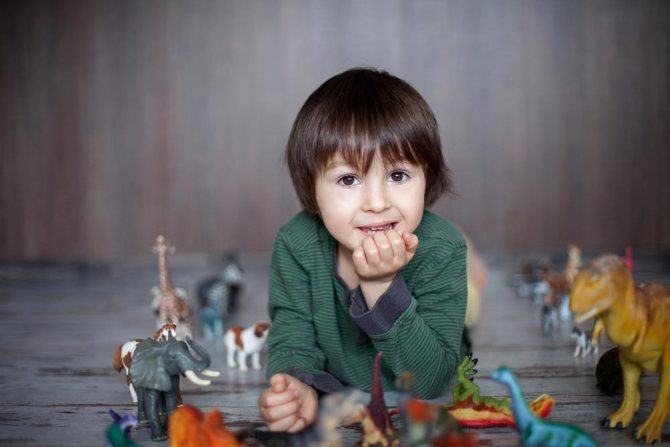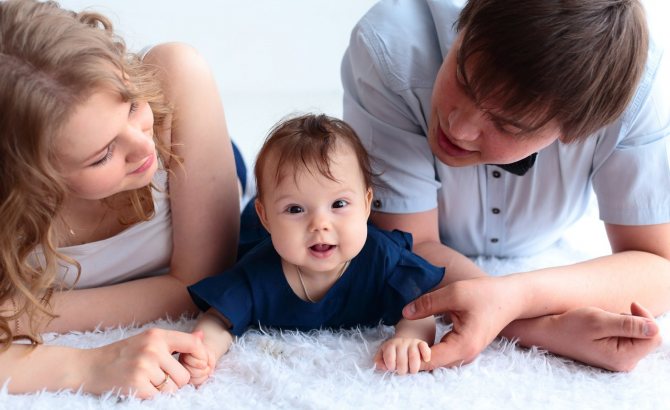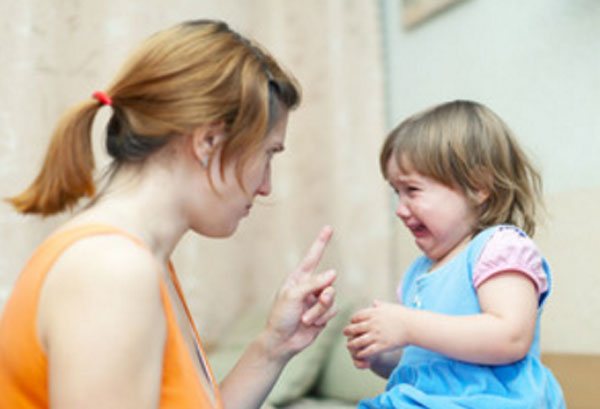Parents of future kindergarteners understand perfectly well: if a child knows how to dress and undress independently and eat at the table, his adaptation to kindergarten will be easier. But what to do if a child knows how, but does not want to show these independence skills? Is it necessary to “pressure” a child so that he always does everything himself - or can this process be left to chance? She talks about what psychologist and mother Anna Bykova does in a situation of “I don’t want to get dressed” in “The Big Book of the Lazy Mom.”
The child does not want to dress himself
He can, but he doesn't want to. He can put on tights, panties, and socks himself, but he sits and waits for them to dress him. Why bother if there are adults who can cope with this task much faster.
Any activity requires motivation or incentive. We do something thanks to two impulses: either because we want it so much, or because we need it so much. And “must” can arise for two reasons: to get something good or to avoid something bad.
It turns out that in order to activate a child, you need to either convey to him the “need” , or captivate him with the “want” . And the smaller the child, the more reliance is placed on “wants.”
- You can involve your child in a competition “Who can get dressed faster?”
- You can create a game situation: filming a super action movie “Get dressed in five minutes and save the world.”
- You can look for a compromise: “Let you put on the pants yourself, and I’ll help with the jacket.”
- You can act through the child’s personal need: “Do you want to be the first to join the group? Then we need to leave in ten minutes. Get dressed quickly!”
Self-dressing skill: when to train and when not to
“My son is five years old. I need him to get ready quickly, but he doesn’t hear me. The fact that we will be late for kindergarten will not upset him in any way. He does everything himself, but so slowly that I lose patience.”
You know, there is such a joke. Announcement: “We’ll make repairs. Fast, high quality, inexpensive. Select any two items." There is a similar situation here: “Getting ready for kindergarten. Fast, high quality, independently. Which two points should I choose?”
- Quickly and independently. Hmm, this will affect the quality: either he forgets to brush his teeth, or he puts on his jacket inside out.
- Quickly and efficiently. Implemented with mother's help.
- High quality and independently. Maybe. But slowly.
At this age stage (preschool child) “quickly, efficiently, independently” is inflated expectations. You can, of course, focus on this standard, but then the mother’s growing irritation is inevitable. Irritation is a bad adviser in the educational process.
The child is not a robot. In general, if a child does something slowly, this does not mean that he does not hear his parents out of harm. It is possible that he has such a speed of life, such a temperament.
And yes, he has no personal interest in the result. It’s the mother who needs to come to kindergarten on time, but the child would be happy to stay at home.
In a situation where you are in a hurry to get somewhere, you can help the child and train the skill of dressing independently when the child has a personal interest in this, when in case of being late he, and not the mother, will feel the negative consequences. If a child does not have personal motivation to quickly get dressed and go where he does not want, he will not respond to advances and compromises. Do you need a dressed child urgently? Then just put him on, the nerves will be intact for both you and him.
Over the years of working in kindergarten, I have observed many children in different situations. I've seen the same kids quickly get dressed when they have a personal interest in it. (For example, go to an amusement park, buy a new toy at the store, or visit a friend.) And how slowly they got dressed when there was no interest.
Independence easily develops out of personal interest or need. But through pressure: “Who did I tell!”, through blackmail: “Otherwise I’ll leave you at home alone!”, through criticism: “You’re always the last one,” a negative attitude towards the process is formed. In the future, whenever possible, the child will avoid independent actions.

Step by step training
How to teach a child to dress independently at 3 years old? Just at this age, a number of problems can arise, as the character that the baby shows is formed, the opinion that he expresses, the desires that he does not want to cross. What should parents do:
- Get dressed. This is a difficult lesson for a child. It should start with an explanation of what part of the clothing is and what to do with it: what is the sleeve, neck, zipper, button for. If at this stage the baby takes the initiative and expresses a desire to dress up in his own way, you should not reject this idea. A parent can give advice, unobtrusively point out mistakes in choices, offer to try different options, but not criticize.
- Wear. You shouldn’t stop there when the baby is able to dress himself for the first time. He adapts better and develops a habit if he wears the chosen outfit for as long as possible. Especially if you went for a walk in it, ran errands with your parents, or just stayed at home. Memo to parents: check that the clothes the child is training in are comfortable. It shouldn’t rub, pinch, or cause any discomfort anywhere, otherwise he simply won’t want to wear it.

Parents must be patient
- Take off. Getting naked is usually much easier for children. First, it's easier to physically remove clothes. Secondly, they feel more comfortable without it. The only thing that can overshadow this stage is the reluctance to go to bed or go swimming. Therefore, at the very beginning, it is advisable to somehow encourage the child’s independence: by playing, watching TV together, or a small gift.
- Clean up after yourself. For many, this stage is the most difficult. At the end of the day, children are tired and do not want to complete the final step in learning. However, it is very important. This disciplines, instills a love of order, and in the future will help the child find and put on this or that thing again. To make it easier, parents should back up the words with their own example, help the first few times, clean everything up together, perhaps in a playful way. Many people find it helpful to consult friends or relatives, since everyone has their own secrets and tricks in this matter.
Fun dances for preschoolers in kindergarten
Note. The child’s independence and acquisition of a new skill will directly depend on the responsibility and reasonable approach of the parents.
Firstly, you need to get up early, which is a problem for many. But if adults succumb to laziness in this matter, then there will be no systematic training with the child, which means the skill will not be learned. Secondly, at first training will take a lot of time, you should be patient, help if necessary, but do not do everything for the baby. And finally, praise. This is a very important point that is often forgotten. It motivates the child to further work.
Looking for motivation for a child
Developing independence is always a task of finding suitable motivation for the child. It is difficult to find a universal recommendation here. Look for what will motivate your child, look for the right words, observe what situations push him to activity. And evaluate motivation not from the position of “why does the mother need this,” but from the position of “why does the child need this.”
For example, my eldest son Arseny did not want to clean his shoes. Because “that will do.” The mother needed polished shoes, not the child. I polished my right shoe to a shine. In contrast, the left one began to lose greatly, and it became clear that “this won’t do.” As a result, Arseny already cleaned his left shoe himself - the motivation for this appeared.
And the youngest, Sasha, didn’t have to be motivated - he wanted to clean his shoes himself. He was three years old when he begged me for a personal shoe-cleaning sponge, jealously made sure no one took it, and wiped his shoes with it every evening.
It was important not to miss this moment of personal interest. Once upon a time, at the same age, Arseny wanted to clean his shoes himself, but I didn’t allow him, because “dirt, germs, he’ll get dirty, he’ll get sick.” (Alas, I was not always a “lazy mother.”) If you don’t give the opportunity to try and learn when there is interest in it, it is not at all a fact that when the child “grows up”, he will retain this interest.
The child does not want to undress on his own
“My five-year-old daughter does not want to undress herself when she comes home. What am I supposed to do? Don’t put pressure, don’t criticize, don’t scold?” - asks a familiar mother.
If he gets tired of being in clothes, he will undress. I remember how, when I was four years old, returning from kindergarten, I would lie on the floor for a long time in my coat. Apparently, I was lazy even then. My parents didn’t persuade me, didn’t shame me, didn’t push me, but didn’t help me undress. When I got tired of lying down, it became hot and uncomfortable, and personal motivation to undress appeared - I got up and took off my coat.
It’s one thing when a child is just lying around, but if he moans throughout the entire apartment: “Undress me!” - what phrase to answer?
First of all, try to understand why he is moaning. Maybe he is sick, and then he needs help. If the child is not sick or physically or emotionally exhausted, clearly express your position: you do not intend to retreat. Sooner or later the child will realize that whining is useless.
For example, you can say: “I undress myself. And you undress yourself. I know you can handle it."
Or: “I can’t help you. I’m busy preparing dinner now.”
Or not. Please do it yourself. You are able to".
Choose the words that are closest to you. It's not what you say that matters, but how you say it. You need calm confidence. If a child hears doubts in his mother’s voice, this is a signal that there is a chance to achieve his goal and he needs to whine a little more...
By the way, I don’t see anything critical in sometimes helping a child undress. If a child is really having a hard time, you should not ignore his requests for help.
The child does not want to eat on his own
— What to do if the child does not want to eat on his own? My daughter is already four years old, and she still has to be spoon-fed.
What does “have to” mean? It’s your decision: to indulge and feed. And what will happen if you stop doing this? Will the child sit in front of a full plate without touching the food? But in this case he will remain hungry.
Let's say you're having breakfast. “If you don’t want it, don’t eat it. Get up from the table. Breakfast is over." Then lunch: “You still won’t take a spoon? As you want". By dinnertime, the child will be so hungry that he will begin to eat on his own, using a spoon perfectly. Unless, of course, there are no snacks in the form of cookies, gingerbread, sweets, and so on.
One thing is important - to calm the internal anxiety of adults. Calm, just calm, as Carlson said, a child will not die of hunger in one day. He has an instinct of self-preservation, and a healthy feeling of hunger will sooner or later prevail over stubbornness. But this will only work if the child sees the calm confidence of the parents and understands that they do not intend to retreat from their position.
If you see that the child is healthy, cheerful and active, then everything is fine. There is no need to panic.
How to behave

Remember to remain completely calm
- Keep calm. Accept that the process of getting dressed and undressed is normal. Over time, the little one will get used to it. Sooner or later the skills will be consolidated. Therefore, you should not threaten your child, give him ultimatums, or blackmail him. With this behavior the results will be zero. It is better if your actions are gradual.
- Think about how collections will take place in advance. Prepare things by determining the order of what to wear first and what to wear last.
- You need to act carefully, excluding sudden movements. You must be careful and attentive. It is important not to hurt the child during the dressing process.
- Before dressing your little one, make sure that the size of the clothing is appropriate, that there are no convex seams, and that the inside is not scratchy. Make sure your child is feeling well and has no skin rashes. If “defects” in clothing are found, change things; if there are health problems, consult a doctor.
- Share the labor. Let the baby put on some things, and let the mother help with some things. At the same time, you can tell the little one that “he is his mother’s assistant.”
- You can resort to playing. For example, a baby's hand entering a sleeve is a train entering a tunnel. And when putting on a sweater, at a time when the child’s head has not yet come out through the collar, it’s a “game of hide and seek.” In addition, offer your child to dress dolls or soft toys.
- It is unacceptable to compare your little one with others, saying it out loud. Such behavior will not only upset the baby, but also reduce his self-esteem.
How to stop spoon feeding your baby
You can also give up spoon feeding gradually, through play. (Yes, yes, that same principle of gradualism!) Try to negotiate with your child: “Let’s take turns. One spoon - I feed you, the second - you eat yourself, then again I and again you.”
Or like this: “Okay, I’ll feed you, but only after you eat exactly five spoons yourself.” (The child eats himself and counts himself - the implementation of the principle of self-control. If he does not know how to count yet, listening to how his mother does it is also useful.) “Come on, you eat, and I will count loudly and solemnly.” (The phrase “loudly and solemnly” for some reason serves as a compelling argument for children.)
During the period when I worked in kindergarten, such games had to be played only with recently arrived children, that is, with those who were still adapting, whose emotional state was unstable. There are more concessions towards them. But if the adaptation was successful, the child feels well in the new environment and does not cry, the whims of the “feed me” series were gently ignored.
"Feed me!" - Vitalik demanded. And if in the first week (the week of adaptation to kindergarten) I fed him, then starting from the second week I deliberately created a situation in which the baby was forced to feed himself. “Vitalik, wait, I need to pour compote for everyone.” And then: “Wait, I’ll go to the bedroom, the bedroom needs to be aired before bed.” And Vitalik waited... For some time... But hunger is not an aunt, so the boy took a spoon and began to eat.
How to teach a child to dress at 2-3 years old?
Important: From the age of 2 years, the child’s development can be characterized by the name “I myself.” This is the most suitable period to teach your child to be independent.
At this age, a child comprehends the world on his own, he wants to do everything himself. If you see this desire, do not interfere. Offer your child your help, because he will not cope completely yet.
First, the child must learn to undress independently. At the age of two years, children themselves take off their socks and hat. A little later, they can unzip the zipper and take off their blouse or panties.
Don't forget about some features:
- The dressing process will take a long time . Sometimes parents can’t stand it and start quickly putting on clothes themselves, because there is not enough time. If you decide to teach your child to dress independently, plan ahead with plenty of time.
- Do not force your child to dress completely . If you have previously fully dressed your baby, he will not be able to learn to put on a blouse, panties, socks, hat, etc. in one day. Teach your baby gradually
- Don't forget to praise your child if he did it successfully . At the same time, do not scold, otherwise the child will lose the desire to dress himself

How to teach a child to dress independently? Don't suppress your baby's initiative











